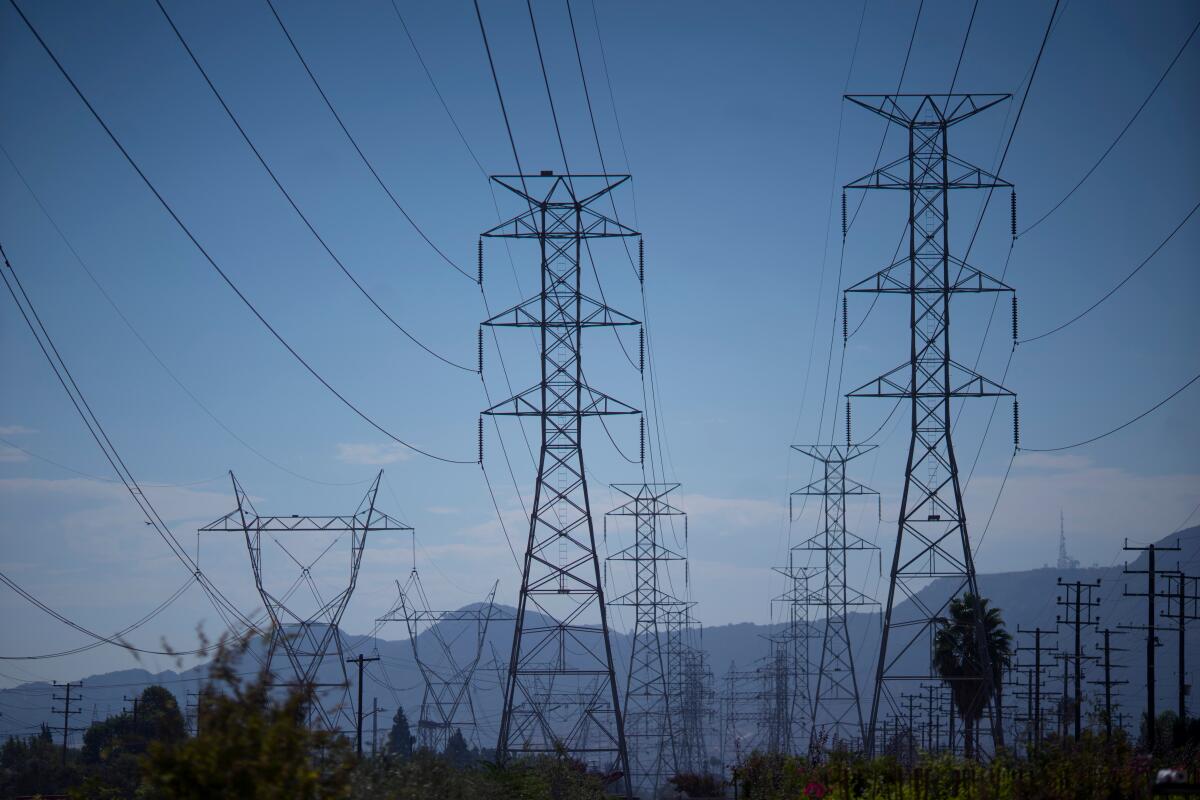A text asked millions of Californians to save energy. They paid heed, averting blackouts

At about 5:45 p.m. Tuesday, millions of Californians’ cellphones lit up with a new type of emergency alert: “Conserve energy now to protect public health and safety.”
That text message warning proved critical in helping avoid rolling blackouts during the grueling heat wave that has taxed the state’s power grid for more than a week, according to California officials.
“Within moments, we saw a significant amount of load reduction showing up, to the tune of approximately 2,000 megawatts over the next 20 to 30 minutes,” said Elliot Mainzer, the president and chief executive of the California Independent System Operator, which runs the state’s power grid. “That significant response from California consumers to the wireless emergency alert allowed us to restore our operating reserves and took us back from the edge of broader grid disturbance.”
Record temperatures. Hot nights. Broiling beaches. Why this California heat wave was so extreme.
Just about 30 minutes before the wireless emergency alert went out — a system historically used for Amber Alerts or location-specific imminent threats, such as wildfires — Cal ISO had readied local utility providers to implement rolling blackouts if conditions did not improve. The state just reached record-setting energy demand, and Mainzer said energy use was not decreasing, until that alert was issued.
“Our absolute intent is not to have to do that again tonight,” Mainzer said. “That is a tool of absolute last resort.”
He called Tuesday an “extraordinarily challenging day” for the power grid, almost pushed to the brink as record-setting temperatures scorched much of the state. Officials projected a peak demand at 51,146 megawatts, but by Tuesday evening, California set an all-time record of 52,061 megawatts.
Tuesday’s record surpassed the previous all-time peak of 50,270 megawatts in July 2006.
According to the California Governor’s Office of Emergency Services, which issued the text alert, residents in certain counties were targeted due to high temperatures, population density and concentration of air conditioner use. The alerts were sent to residents in Alameda, Butte, Contra Costa, El Dorado, Fresno, Kern, Kings, Los Angeles, Madera, Marin, Merced, Orange, Placer, Sacramento, San Joaquin, Santa Barbara, Santa Clara, Shasta, Sonoma, Solano, Stanislaus, Tulare, Ventura and Yolo counties.
There are about 27 million people who live in the targeted counties, Brian Ferguson, a spokesperson for the emergency services office said. Alerts were sent in English and in Spanish.
San Francisco, Marin and Humboldt counties did not receive alerts because although they have large populations, most people do not use air conditioning.”
“It is pretty unprecedented to be used this way, particularly for energy,” Ferguson said.
All the latest on Orange County from Orange County.
Get our free TimesOC newsletter.
You may occasionally receive promotional content from the Daily Pilot.






